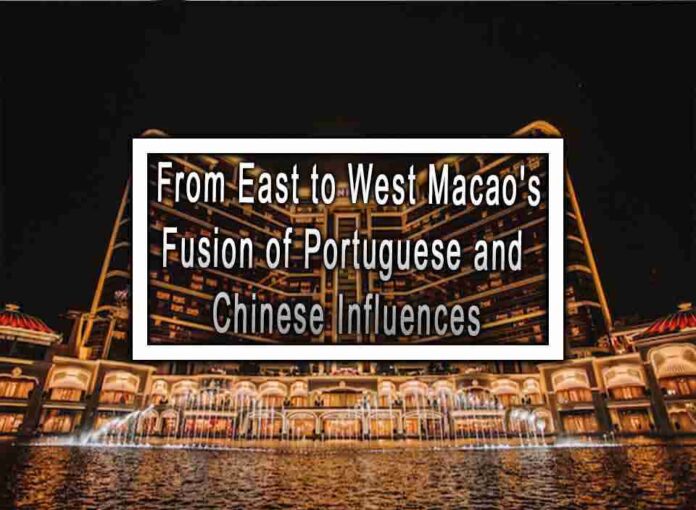Macao, a vibrant and unique destination, embodies a captivating fusion of Portuguese and Chinese influences that has shaped its culture, architecture, and way of life. Located on the southern coast of China, Macao was a former Portuguese colony until its handover to China in 1999. This blend of Eastern and Western heritage is evident in various aspects of the city:
Architectural Diversity:
- Macao showcases a remarkable mix of architectural styles. Streets are lined with European-style buildings adorned with Chinese elements, creating a harmonious blend. The Historic Centre of Macao, a UNESCO World Heritage Site, features well-preserved colonial structures.
Religious Landmarks:
- The city boasts an array of religious buildings that reflect its cultural convergence. The Ruins of St. Paul’s, an iconic façade of a former church, is a symbol of Macao’s unique heritage. Taoist temples, Buddhist monasteries, and Christian churches coexist throughout the city.

Culinary Delights:
- Macao’s cuisine is a testament to its fusion of cultures. The city is renowned for its Macanese cuisine, which blends Portuguese and Chinese flavors. Dishes like “Portuguese egg tarts” and “African chicken” reflect this delightful culinary crossroads.
Language and Literature:
- The linguistic blend in Macao is a reflection of its history. Portuguese and Cantonese are the official languages. The Macanese language, a creole combining Portuguese and Chinese elements, is spoken by some residents.
Festivals and Celebrations:
- Macao celebrates a range of festivals that reflect its multicultural identity. Events such as Chinese New Year, Dragon Boat Festival, and the Feast of the Drunken Dragon are observed alongside Portuguese-inspired festivities.
Arts and Culture:
- The city’s art scene reflects its diverse influences. Macao’s museums, galleries, and cultural spaces exhibit both traditional and contemporary works that bridge East and West.
Bridges of Connection:
- Notably, the Ponte de Amizade and the Ponte da Sai Van bridges physically connect the Macao Peninsula to Taipa and Coloane islands. These structures symbolize the link between Macao’s historical and cultural duality.
Traditional Craftsmanship:
- Macao has preserved traditional craftsmanship influenced by both cultures. The streets of Taipa Village are lined with stores selling Chinese and Portuguese-inspired crafts, ceramics, and textiles.
Entertainment and Gaming:
- Macao’s vibrant entertainment scene is marked by the fusion of cultures. The city’s reputation as the “Las Vegas of Asia” combines the Portuguese heritage with a modern entertainment industry.
Macao’s fusion of Portuguese and Chinese influences has created a unique cultural tapestry that is celebrated by both residents and visitors. The harmonious blend of these two distinct traditions has made Macao a truly captivating destination where the past and present seamlessly coexist.











